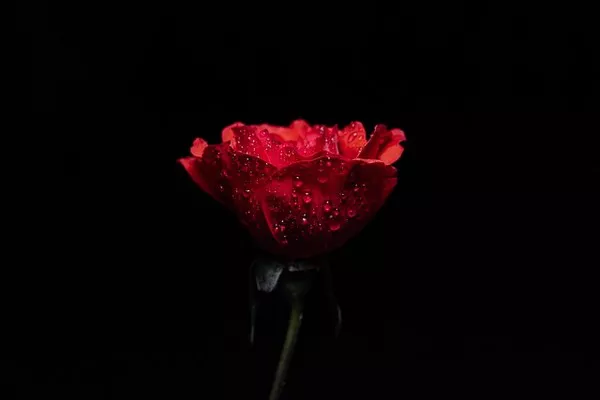Valentine’s Day, celebrated on February 14th every year, is a time-honored occasion dedicated to expressing love and affection to those we cherish. It’s a day when romantic gestures abound, and among the most iconic symbols of this affection are red roses. Red roses have long been synonymous with love and passion, but their significance goes beyond mere aesthetics. Understanding the deeper meaning behind the red rose can enhance the sentiment behind the gesture and enrich the experience of both the giver and the recipient.
A Symbol of Love Through the Ages
The association between red roses and love traces back through centuries of human history. Ancient Greek and Roman mythology revered the rose as a symbol of beauty and love, often linked with goddesses like Aphrodite and Venus. In Christian tradition, the red rose became associated with the Virgin Mary and the blood of martyrs, further cementing its symbolism of love and sacrifice.
During the Victorian era, when expressing emotions openly was considered improper, the language of flowers, or floriography, gained popularity as a subtle means of communication. In this intricate language, each flower held specific meanings, and the red rose emerged as the ultimate symbol of romantic love and desire. The exchange of red roses became a way for individuals to convey their deepest emotions when words fell short.
Passion, Desire, and Romance
The deep crimson hue of the red rose evokes powerful emotions of passion and desire. Its rich color symbolizes the intensity of romantic love, making it the quintessential choice for Valentine’s Day. When someone presents a bouquet of red roses to their beloved, they are expressing not only affection but also a burning desire and longing for a deeper connection.
The velvety texture of the rose petals adds another layer of symbolism, representing the softness and tenderness inherent in romantic relationships. The intoxicating fragrance of the rose further enhances the sensory experience, enveloping the recipient in a cocoon of love and desire.
Devotion and Commitment
Beyond the initial spark of passion, red roses also symbolize enduring love and commitment. Unlike fleeting infatuations, true love is steadfast and unwavering, much like the timeless beauty of the rose. By presenting red roses on Valentine’s Day, individuals convey their dedication to nurturing and preserving the bond they share with their partner.
In the language of flowers, the act of giving red roses is akin to making a solemn vow of devotion, promising to stand by one another through life’s trials and triumphs. It’s a gesture that speaks volumes, reaffirming the depth of feelings and the promise of a future filled with love and companionship.
Romantic Gestures and Traditions
The tradition of gifting red roses on Valentine’s Day has endured for centuries, evolving with time while retaining its timeless appeal. From elaborate bouquets to single long-stemmed roses, the presentation of red roses is a gesture steeped in romance and tradition.
For many, the exchange of red roses on Valentine’s Day is a cherished ritual that symbolizes the pinnacle of romantic expression. Couples eagerly anticipate the moment when they can declare their love through this timeless symbol, creating memories that will be treasured for years to come.
Personalized Expressions of Love
While the red rose carries universal symbolism, its meaning can be deeply personal and nuanced based on the context of the relationship. For some, it represents the fiery passion of a new romance, while for others, it symbolizes the enduring love that has weathered the test of time.
In modern times, the presentation of red roses has expanded beyond romantic partners to encompass expressions of love for friends, family members, and even oneself. As society embraces diverse forms of love and relationships, the red rose remains a versatile symbol that transcends boundaries and celebrates the beauty of human connection.
Cultural Variations and Interpretations
While red roses hold universal appeal as a symbol of love, different cultures may interpret their significance in unique ways. In some Asian cultures, for example, red is associated with good fortune and joy, making red roses a popular choice for celebrations and expressions of happiness.
Similarly, in Latin American countries, red roses are often exchanged not only on Valentine’s Day but also during other romantic occasions such as anniversaries and weddings. The passionate spirit of Latin culture imbues the gesture with an added layer of intensity and emotion, reinforcing the deep bond between lovers.
Conclusion
In the tapestry of human emotions, few symbols evoke the depth and intensity of love quite like the red rose. Its timeless beauty and profound symbolism have made it an enduring icon of romance, cherished by lovers around the world. Whether exchanged on Valentine’s Day or any other occasion, the gift of red roses serves as a poignant reminder of the power of love to inspire, uplift, and unite us all. As we continue to navigate the complexities of modern life, let us not forget to pause and celebrate the simple yet profound joys of love, expressed through the language of the heart and the timeless elegance of the red rose.


